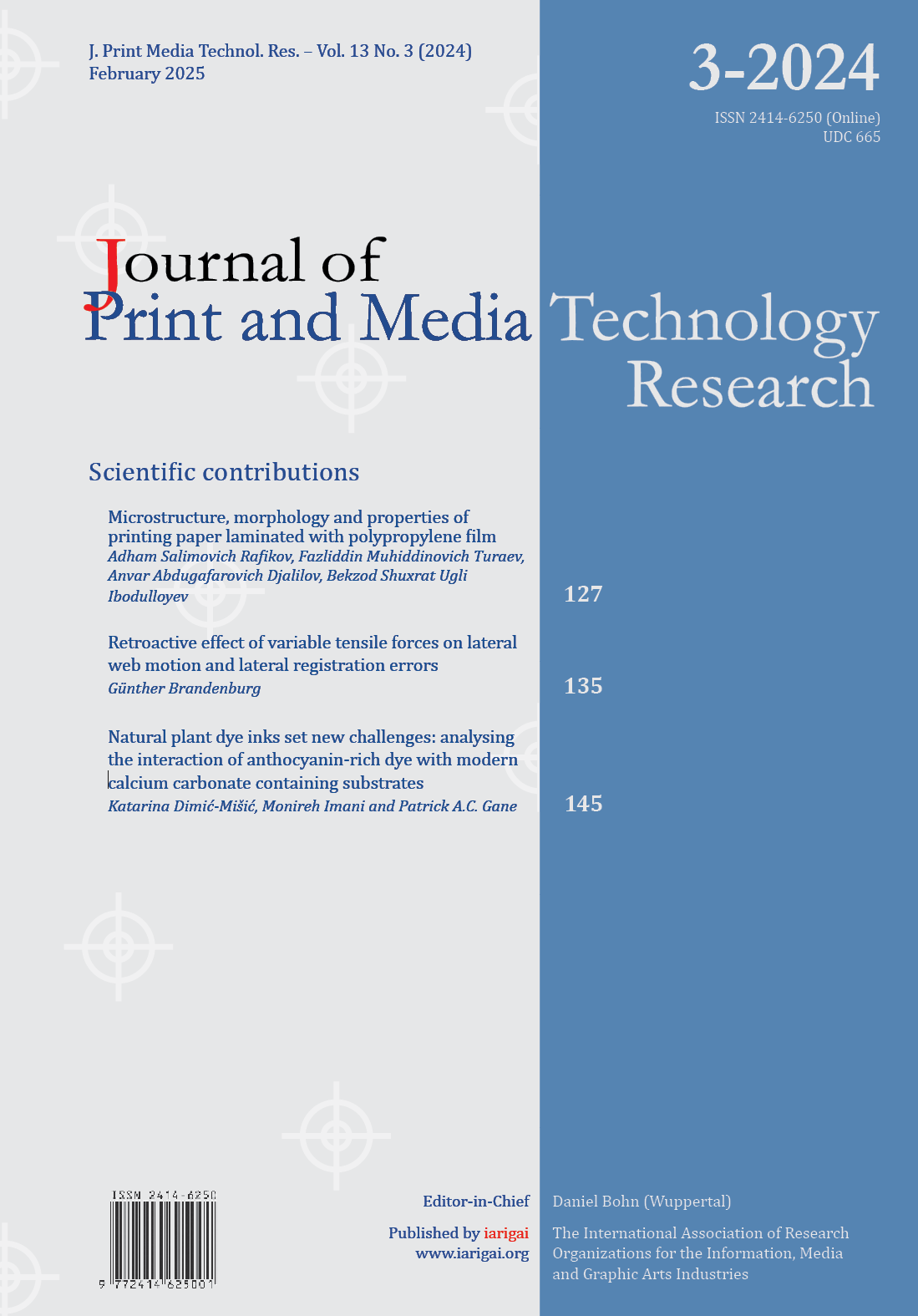Microstructure, morphology and properties of printing paper laminated with polypropylene film
Main Article Content
Abstract
To improve design, reduce wear, and extend service life, lamination involves applying a thin polymer film to paper or cardboard using hot melt adhesive or a solution. Moreover, hot melt adhesive bonds well to a fairly rough or matte surface. If the surface of the paper or cardboard is smooth or glossy, then molten high molecular weight polymer adhesive does not always penetrate its micropores. Due to differences in melting temperatures between the polymer adhesive and the polymer film, the polymer adhesive does not bond strongly enough to the polymer film.
In this study, in order to increase the adhesive strength between paper and polymer film, glossy paper was laminated with polypropylene film using an adhesive solution of ethylene–vinyl acetate (EVA) copolymer. A polymer adhesive solution, unlike a melt, penetrates into the micropores of glossy paper and ensures strong adhesion of the polymer film to the paper surface. FT–IR spectroscopic studies of polypropylene, EVA copolymer, and laminated paper showed the absence of chemical interaction between them during the lamination process.
As studies on SEM-EDS analysis have shown, the adhesion interaction between the polymer film and the adhesive occurs due to ethylene units, and between the paper and adhesive due to vinyl acetate units. In contrast to the industrial sample with hot melt adhesive, in the experimental paper sample, near the polypropylene film, micropores are filled with a polymer adhesive solution. Elemental analysis of torn layers of laminated paper shows the presence of polymer adhesive in the micropores of the paper layer. The adhesive strength between layers of laminated paper is 20 % higher, and the penetration force is 40 % greater than that of the industrial sample.
Article Details

This work is licensed under a Creative Commons Attribution-NonCommercial 4.0 International License.
